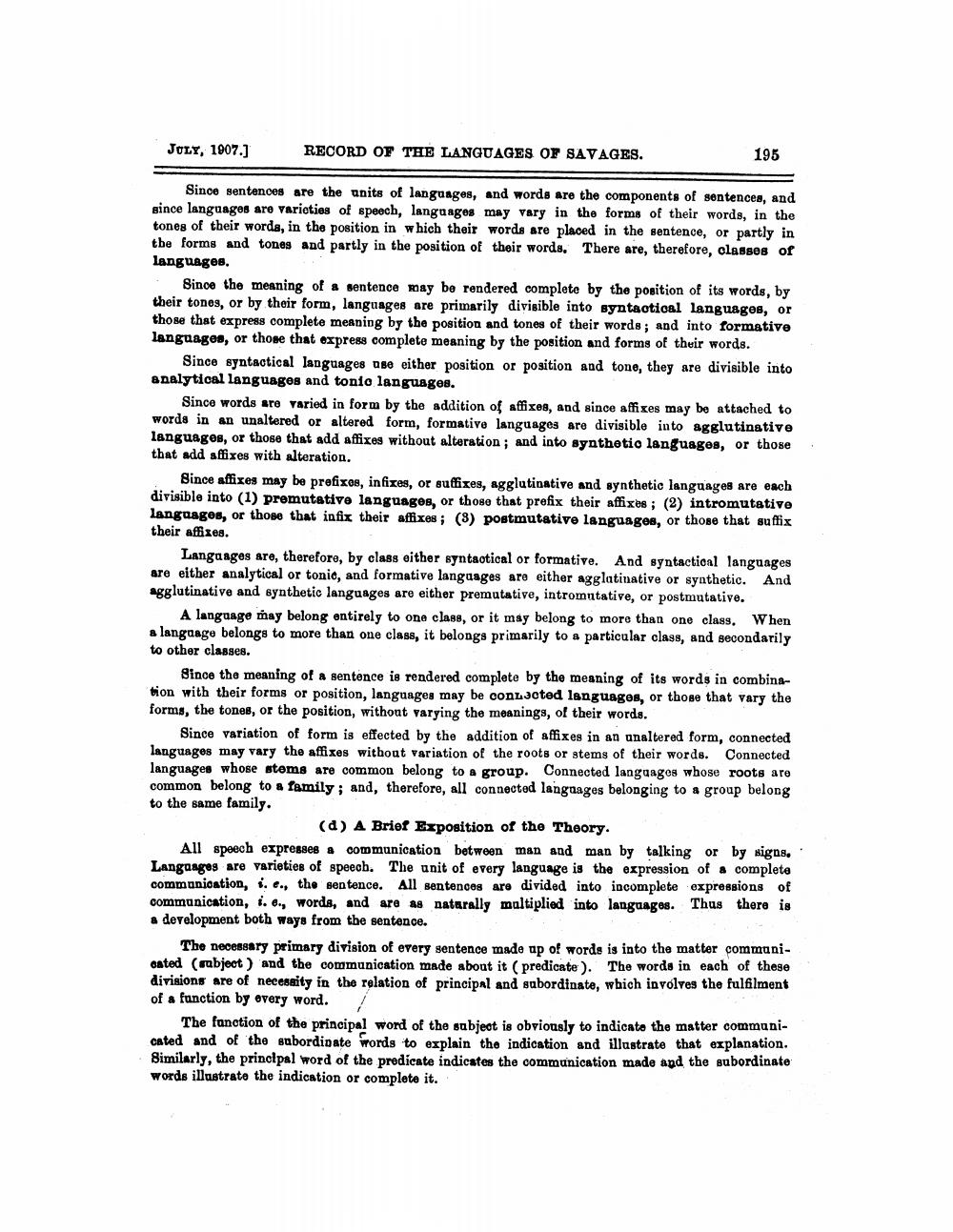________________
JULY, 1907.]
RECORD OF THE LANGUAGES OF SAVAGES.
Since sentences are the units of languages, and words are the components of sentences, and since languages are varieties of speech, languages may vary in the forms of their words, in the tones of their words, in the position in which their words are placed in the sentence, or partly in the forms and tones and partly in the position of their words. There are, therefore, classes of languages.
195
Since the meaning of a sentence may be rendered complete by the position of its words, by their tones, or by their form, languages are primarily divisible into syntactical languages, or those that express complete meaning by the position and tones of their words; and into formative languages, or those that express complete meaning by the position and forms of their words.
Since syntactical languages use either position or position and tone, they are divisible into analytical languages and tonic languages.
Since words are varied in form by the addition of affixes, and since affixes may be attached to words in an unaltered or altered form, formative languages are divisible into agglutinative languages, or those that add affixes without alteration; and into synthetic languages, or those that add affixes with alteration.
Since affixes may be prefixes, infixes, or suffixes, agglutinative and synthetic languages are each divisible into (1) premutative languages, or those that prefix their affixes; (2) intromutative languages, or those that infix their affixes; (3) postmutative languages, or those that suffix their affixes.
Languages are, therefore, by class either syntactical or formative. And syntactical languages are either analytical or tonie, and formative languages are either agglutinative or synthetic. And agglutinative and synthetic languages are either premutative, intromutative, or postmutative.
A language may belong entirely to one class, or it may belong to more than one class. When a language belongs to more than one class, it belongs primarily to a particular class, and secondarily to other classes.
Since the meaning of a sentence is rendered complete by the meaning of its words in combination with their forms or position, languages may be connected languages, or those that vary the forms, the tones, or the position, without varying the meanings, of their words.
Since variation of form is effected by the addition of affixes in an unaltered form, connected languages may vary the affixes without variation of the roots or stems of their words. Connected languages whose stems are common belong to a group. Connected languages whose roots are common belong to a family; and, therefore, all connected languages belonging to a group belong to the same family.
(d) A Brief Exposition of the Theory.
All speech expresses a communication between man and man by talking or by signs. Languages are varieties of speech. The unit of every language is the expression of a complete communication, i. e., the sentence. All sentences are divided into incomplete expressions of communication, i. e., words, and are as naturally multiplied into languages. Thus there is a development both ways from the sentence.
The necessary primary division of every sentence made up of words is into the matter communieated (subject) and the communication made about it (predicate). The words in each of these divisions are of necessity in the relation of principal and subordinate, which involves the fulfilment of a function by every word.
The function of the principal word of the subject is obviously to indicate the matter communicated and of the subordinate words to explain the indication and illustrate that explanation. Similarly, the principal word of the predicate indicates the communication made and the subordinate words illustrate the indication or complete it.




